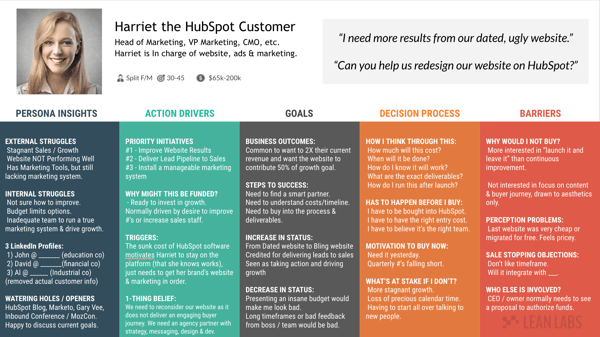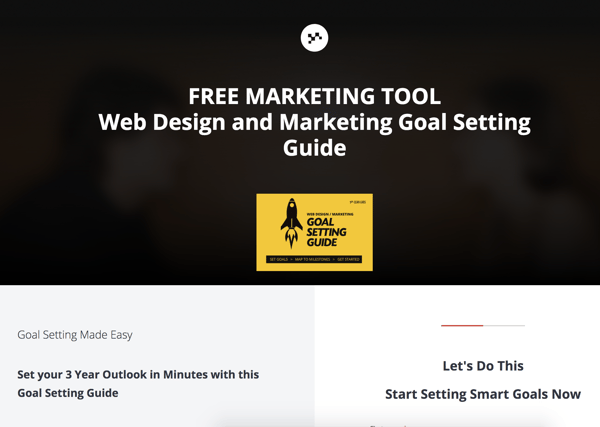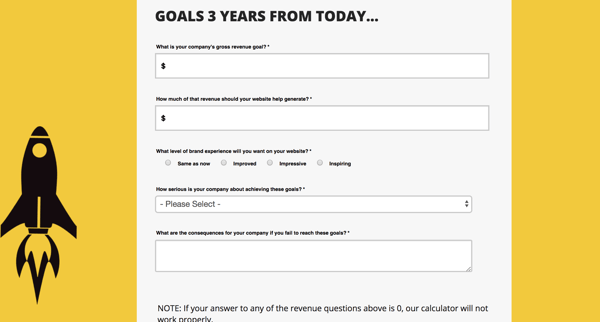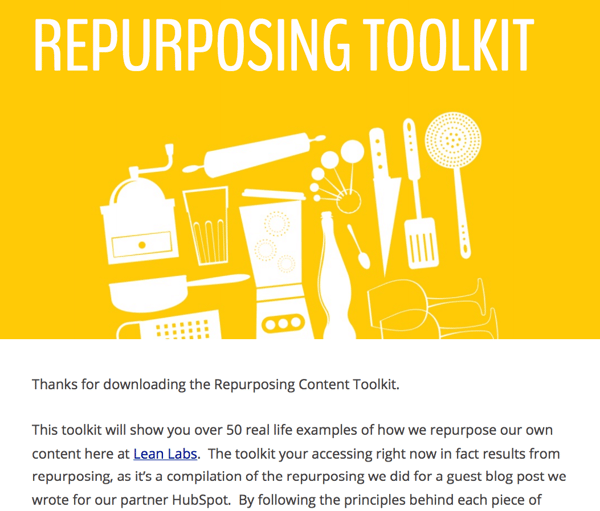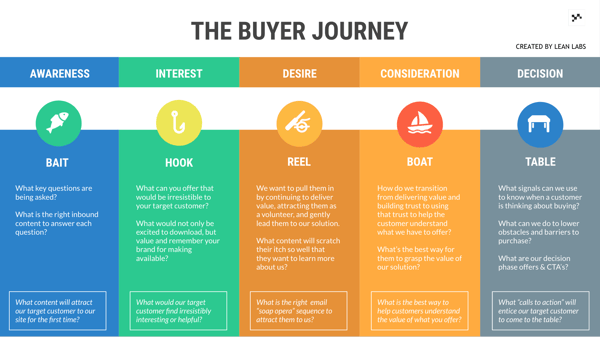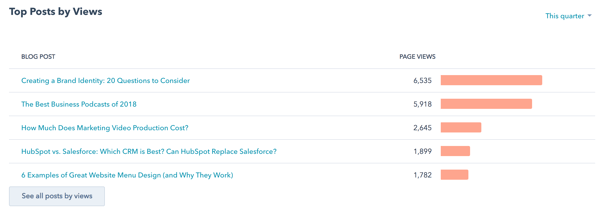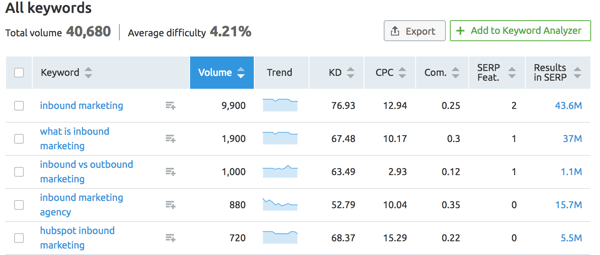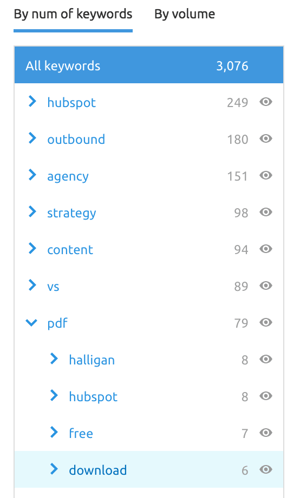Content marketing can create over three times as many leads as outbound marketing, and often, can cost about 62% less.
But that's only if you've got exceptional content.
Exceptional content, such as a highly valuable lead magnet, can be the key to attracting new, more qualified leads. And it starts with thinking of a great lead magnet ideas.
How To Find Exceptional Lead Magnet Ideas
If you’re not familiar with the term, a lead magnet is a TOFU (top of the funnel) asset that generates new (you guessed it) leads. A visitor to your website or blog clicks on a call-to-action, lands on the landing page for the offer, decides it’s worth their time and fills out the form.
You get a new lead, and the lead gets a useful asset. And depending on the quality of the offer you provide, it’s a pretty good trade.
However, when the material the lead receives in exchange for their personal information isn’t that great, your potential customer is left feeling like it wasn’t such a great deal after all. That's why people are so hesitant to download lead magnets.
That's why you need to go on the offense and create lead magnet ideas that gets them to click, making it worth the trade.
1. Hit Your Persona's Pain Points, Hard.
To create a lead magnet that inspires action, you need to identify the specific challenges and frustrations your ideal customer is experiencing. Let's say that I'm creating content for Lemonade, a company that sells renters and home insurance.
Based on this sparse amount of information, one could assume the primary challenge the customer has is that they don't have insurance. Right?
Yes, but here's the danger with assumptions: while the customer might need insurance, that's not necessarily their problem.
Unless their new apartment requires renters insurance to get a lease, they're not waking up every day and thinking:
"Gee, I'm losing sleep over the fact that I don't have renters insurance!"
As a result, to create a lead magnet for Lemonade, I need to identify the problems caused by the lack of insurance. What trigger events need to occur to make their persona realize they need insurance?
Often, it's pain points such as:
- They live in an area with a significant amount of severe weather, such as wind, rain, etc., and frequently get minor amounts of damage. They're worried their landlord is going to make them pay for it.
- They have an existing policy that they pay way too much for and are frustrated with the cost.
- A friend, co-worker, or a family member experienced damage to their rental, and they're afraid of the same thing happening to them.
To find these concerns, I would go back to your strategy documents like the buyer persona and business model canvas. From these resources, you should be able to extract some external and internal struggles.
I would also recommend considering how accurate those documents are. Who put the strategy together? Is the information outdated? You're making a substantial investment when you create a lead magnet, so you want to make sure you're focusing on the right problem.
Basically, you want to create specific, actionable content that makes them aware of the problem and go:
"Hey! I don't have renters insurance and that could probably help!"
A lead magnet such as, "The Renter's Guide To Saving Money," could provide insights about getting back deposits, protecting expensive items, and potential cost risks from weather.
Read More: If your personas need work, check out our article about how you can optimize your buyer personas.
2. Give Them A Resource
You know the saying, if you give a man a fish, you feed him for a day, but if you teach a man to fish, you will feed him for a lifetime?
In the context of your customer's problem (their hunger) and solution (the fish), what is the fishing pole? Whatever that tool is, you want to build it and make it a highly engaging asset.
CoScheduler, a marketing calendar platform, made a tool I didn't even realize I needed with a headliner analyzer.
The analyzer takes my headlines and scores them, and also makes recommendations for improvements.
It makes my job as a content strategist a lot easier.
What resource would make your persona's day-to-day life a lot easier? What do they spend a ton of time on? How could you make their burdens a little lighter?
In my experience, great resources can are:
Checklists
Take a task or job that your ideal persona needs to do, and give them a checklist including every step they need to take to get it done. It's not a lead magnet, but I wrote a blog post called The HubSpot Landing Page Checklist to Make it Convert Like Gangbusters that anyone could follow to build a landing page.
All of the steps are there, guiding the reader through the process quickly and efficiently. If I wanted to, I could elaborate on those points even further to make a really good lead magnet.
Worksheets
Worksheets can be a great resource, because they simplify a complex problem and make it much more digestible. Our Goal Setting Worksheet asks business owners the right questions, and based on those responses, they get an idea of what their three-year goals should be.
We gate it on a landing page that promises to make "goal setting easy", broadly explaining how the worksheet will help you project your three year goals.
Then, you can fill out the form and access the interactive worksheet.
As a bonus, we review those responses and provide more personalized recommendations. If you want to create something similar, you can easily do so with a spreadsheet, rather than building something interactive.
Toolkits
Our go-to toolkit is our Repurposing Toolkit: Why & How to Repurpose Content, which is basically a long-form checklist. We provide points on repurposing existing content for different channels, and walk through each step in incredible depth.
Any toolkit needs to deliver on the promise of the article, and give the reader every resource, tip, and trick necessary to get their job done.
You can get inspiration for your own resource with your buyer journey or customer journey map.
The buyer journey is a strategy document that walks through every stage, catalogues the content necessary to satisfy the customer at that point, and move them to the next step.
A customer journey mapping exercise records the customer experience from start-to-finish (as it is now) and asks you to write out the ideal experience, even if you're not providing that experience now.
A few other ideas for resourceful lead magnets are:
- Scripts
- Free coaching sessions
- Calendars
- Web apps
- Calculators
- Templates
- Swipe files
- Planners
- Worksheets
- Tutorials
Read More: Before you can create a strong lead magnet, you need to have the right buyer journey in place. Here's how the right buyer journey can drastically improve conversions on your website.
3. Audit Competitor Titles
There's a fun movie out in rom-com land called Thirteen Going On Thirty, which you have heard of if you have a thirteen year old daughter, or were a thirteen year old girl at some point in your life.
One of my favorite scenes (that is also strangely relatable to this post) is where the Editor-in-Chief of the magazine that main character works at complains about a competing magazine stealing their cover story.
"I wonder which one Holly Housewife is going to grab at the local supermarket," asks Andy Serkis. "The 10 secrets, or the 11?"
The idea is that the other magazine took the title of an article, and made it more enticing by sharing an additional "secret" from actress Jennifer Lopez. Marketers do this all the time, and you can do this to help generate more conversions for your lead magnets.
Take your concept and potential title and see what's already out there. Only look at the title and landing pages for the other lead magnets and assess how useful, educational, or entertaining it appears based on that material. A few questions that can help guide you include:
- Is the title engaging? Does it promise anything?
- Does the resource appear to be up-to-date?
- Is the landing page copy compelling?
- Where did the competitor leave out critical details or fail to hook the customer?
- What are some assumptions you can make by looking at the title and landing page?
- Does it seem like this resource will ultimately help solve the customer's problem?
For example, if the personal financial management company Mint wanted to make an offer, they could look at the titles of content offers that Personal Capital, Tiller, YNAB, Status, and Moneydance, already have out there. Using that information, they could brainstorm stronger titles that will outpace or eclipse any competing material.
Read More: Once you have a great title, reinforce it with a great landing page. Here's how you can put together an awesome HubSpot landing page and get better conversion rates.
4. Audit Existing Educational Resources
Chances are, there are existing lead magnets, such as slideshows, ebooks, and tutorials that aren't your direct competitor's, but still help your customer accomplish or move towards solving their problem. In addition to a competitor analysis, you want to assess this material as well.
I'll use the Mint.com example again. When it comes to content, their direct competitors are not only other personal finance management companies. There are finance bloggers, banks, and influencers who are also creating content about budgeting, wealth management, and credit scores.
For instance, one of their recent blog posts, 6 Ways to Bolster Your Emergency Fund by $500 is a broad topic that is helpful, but also not one-of-a-kind material. NerdWallet provides an emergency fund calculator, Dave Ramsey shares his go-to four tips for building an emergency fund, and BankRate gives an in-depth emergency fund how-to as well.
Our ideal persona doesn't care that these are not personal finance management companies telling them what to do. They're just looking around the internet looking for guidance.
If I were tasked with creating a lead magnet for Mint, I would go through all of these resources with a fine-tooth comb and find their strengths, weaknesses, and opportunities for improvement. Then, I would highlight how my content offer will overcome those weaknesses, and even spell it out on the landing pages.
I could even take the Skyscraper blog post template approach, and extract every nugget of wisdom to use for my own content. If there are a ton of articles from financial bloggers about building an emergency fund, why not create a massive tip sheet with the title:
"X Tips For Building An Emergency Fund From Top Personal Finance Bloggers"
I take their best tips and create an asset that makes all of those other resources obsolete. Again, which asset is Holly Housewife going to click on, the measly article with ten tips from one finance blogger, or a .pdf with 100 tips from 20 different finance bloggers?
It's a little bit Cersei Lannister diabolical, taking out the competition, but how else do you end up on the Iron Throne?
(That's a Game of Thrones reference.)
If you're interested in learning more about the Skyscraper method, check out this other article I wrote.
5. Analyze Your Current Content Strategy
Often, lead magnet ideas are hidden in the performance of your existing content. If you go through the performance of your previous posts, you can identify common topics and themes that are generating the most views and clicks. This is a great way to identify low-risk lead magnet ideas that will likely provide a return on your time and energy.
You should build lead magnets to fit these topics because you're already getting traffic, so you've already won half the battle.
If you have HubSpot, this is pretty easy information to collect. Go to the analyze tab of your blog, and browse through top posts by views, top posts by clicks, etc.
You can also go into Google Analytics to find this information.
For instance, HubSpot writes a lot about inbound marketing. If they realized that a significant amount of their top performing posts were about B2B video marketing, it could indicate that it's a hot topic that a lot of their customers want to learn more about.
This could inspire a lead magnet that covers a specific aspect of B2B video marketing. Then, you can drive the traffic already finding your blog articles about video marketing towards that lead magnet with an engaging CTA.
Here's how to create compelling calls-to-action your readers can't help but click on.
6. Dive Into SEMrush
Once you know the topic or theme of your lead magnet, you will want to go into a keyword research tool like SEMrush and determine if there's enough traffic to merit a content asset. If I wanted to write an inbound marketing offer, I would research the term "inbound marketing" and analyze the phrases with the lowest difficulty and steady stream of monthly traffic.
In this case, there's decent traffic for a lot of terms relating to inbound marketing. I can use that insight to fine-tune my title, inform my landing page copy, and optimize the content for search.
I can also look to SEMrush's nifty resource tools, like this sidebar sorting by the number of keywords to see the types of assets people are searching.
The sidebar tool can be a good resource for deciding which format to deliver your lead magnet in. There's a little traffic around the keyword "inbound marketing strategy presentation," but ideally, I will want to look through other phrases, such as tip lists or worksheets to see if there's more opportunity there.
SEMrush can prevent you from wasting time on keywords or topics that don't have much interest.
Getting the most from your Lead Magnets
Having a strong lead magnet is the first step to generating more positive, meaningful customer relationships. The right lead magnet also helps you attract the right customers from the beginning. They're an essential part of a robust inbound marketing strategy, and that's what makes them so important.
If you make a lead magnet that performs well, it can mean significant growth, new customers, and more. However, to get the most from your lead magnets, you need to incorporate them into an awesome inbound marketing strategy. Your inbound marketing strategy is everything to getting more ROI from a lead magnet.
To learn more developing the right inbound marketing strategy, check out our guide, Conquering The Inbound Marketing Mountain.




